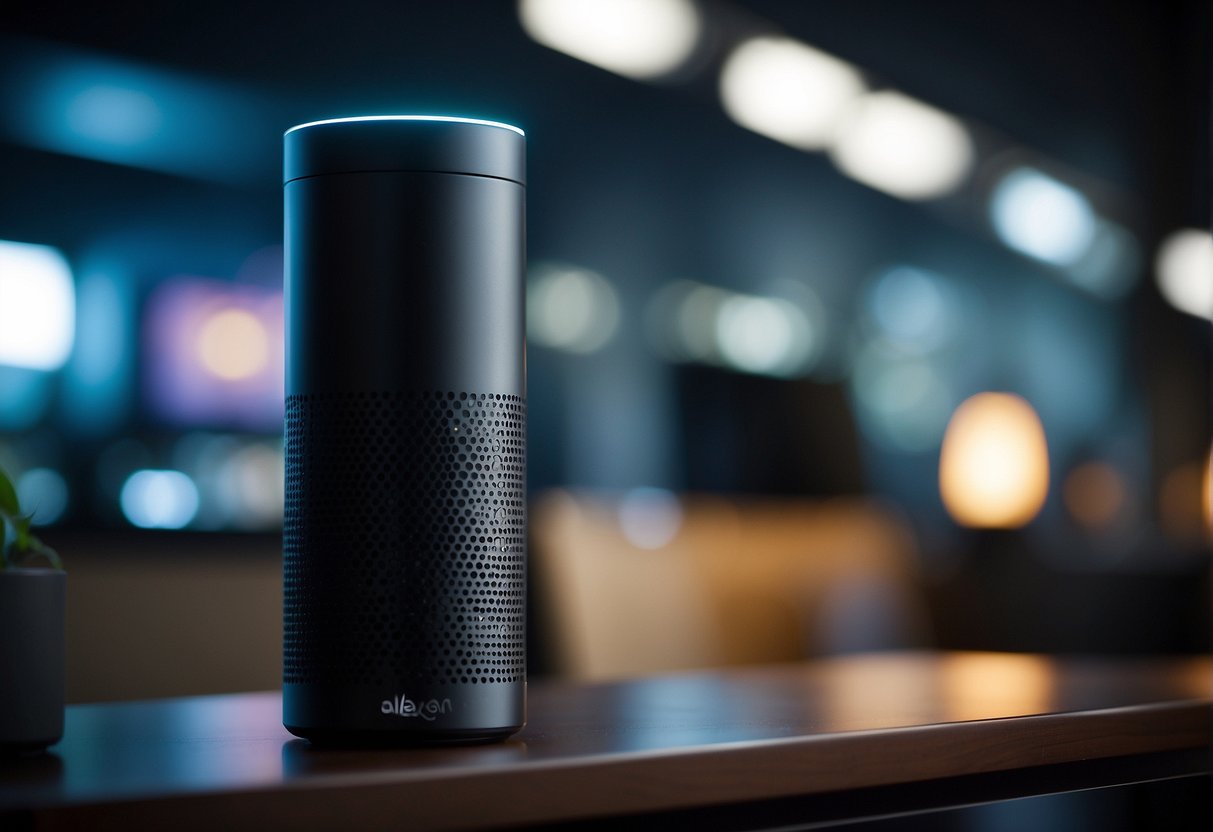As a smart home enthusiast, I’ve found that using Alexa for home security is not only convenient but also adds an extra layer of protection to my living space.
With the increasing popularity of smart home devices, integrating Amazon’s Alexa voice assistant into your home security system is becoming more common and much easier to implement.
In this article, I’ll share some ways on how to make the most of Alexa’s capabilities for home security, ensuring your safety and peace of mind.
Table of Contents

To begin, it’s essential to choose a security system that’s compatible with Amazon’s Alexa.
Some of the best options out there are Abode Essentials Starter Kit, ADT, and SimpliSafe, as they provide seamless integration with Alexa and offer various features, such as arming and disarming through voice commands.
Once you have your Alexa-compatible security system set up, managing your smart home devices and monitoring your home’s safety becomes a breeze.
You’ll also be able to enjoy additional conveniences like controlling lights, adjusting thermostats, and possibly even closing your garage door – all thanks to Alexa’s wide range of voice commands.
I’m excited to guide you through some helpful tips and tricks on how to make the most of Alexa’s compatibility with your home security system.
Setting Up Alexa for Home Security
Connecting Your Devices
To get started with using Alexa for home security, the first step is to connect your smart devices to your Amazon Alexa.
Many popular home security systems offer Alexa-compatible components such as smart lights, locks, and cameras.
Before connecting any device, ensure that a stable Wi-Fi connection is established. Then, open your Alexa app to discover and pair the devices.
This can be done by going to Devices > Add New Device, and following the on-screen instructions.
Customizing Security Settings
Once your devices are connected, you can begin customizing your security settings.
You might want to set up routines that automate certain actions, like turning on your smart lights when motion is detected or locking your doors at a specific time each day.
To create a routine, go to the Routines section in the Alexa app and click on the ‘+’ icon to add a new one. Select a trigger and define the actions you want Alexa to perform, such as arming your security system or adjusting smart thermostats.
Installing Alexa Skills for Security
Finally, you’ll want to install specific Alexa Skills designed to enhance your home security experience. Alexa Skills are like apps, providing additional functionality for your smart home.
Some top home security systems have custom Alexa Skills that enable voice commands for arming or disarming the system, or checking the status of a specific sensor.
To install a skill, open your Alexa app and search for the desired home security system skill (such as SimpliSafe Home Control or ADT).
Once you find it, tap Enable to link the skill to your security system account. Now, you can start using Alexa to control your home security with simple voice commands.
Remember to use a friendly tone of voice and first-person singular (I, me, my, mine, etc.) when explaining these steps in your article.
Alexa’s ability to integrate with your smart home security can make managing your home’s safety much more convenient and efficient.
By connecting your devices, customizing your settings, and installing the appropriate Alexa Skills, you’ll soon have a powerful, voice-controlled home security system at your command.
Using Alexa Guard Features
Activating Alexa Guard
To get started with Alexa Guard, I first need to activate it on my Alexa app.
Once I’ve launched the app, I navigate to the “Devices” tab, locate the “Guard” option, and go through the quick setup process.
This includes enabling Smart Alerts and Away Lighting features to protect my home while I’m away.
Activating Alexa Guard is as simple as saying “Alexa, I’m leaving” to enable Guard mode. When I come back, I just say “Alexa, I’m home” to disable Guard mode.
Smart Alerts and Notifications
With Alexa Guard enabled, my home is protected by Smart Alerts. These notifications inform me of any unusual sounds, like glass breaking or a smoke alarm, while I’m away.
I can personalize the alerts in the Alexa app by adjusting the sensitivity levels of the sound detection.
For an extra layer of security, I can also subscribe to Alexa Guard Plus, which offers a range of additional features such as 24/7 emergency response assistance.
Away Lighting to Deter Intruders
One fantastic feature I found with Alexa Guard is the Away Lighting. This burglar deterrent function automatically turns my smart lights on and off with a randomized pattern, creating the illusion that someone is home.
By toggling the “Away Lighting” switch in the Alexa app, I can control which lights participate in the Away Lighting mode and ensure my home appears occupied even when I’m not there.
This simple yet effective feature helps me feel more secure when I’m away from home.
Smart Device Integration for Enhanced Security
As someone who values home security, I’ve found that integrating smart devices can significantly enhance protection and peace of mind.
In this section, I’ll discuss how different types of smart devices, such as security cameras, smart locks, and sensors, can be seamlessly integrated into a comprehensive home security system.
Security Cameras and Doorbells
One of the key components of any home security system is the use of security cameras and video doorbells.
These devices not only provide surveillance for your property but also offer live streaming, video recording, and alerts when someone approaches your home.
Some popular options include the Ring Video Doorbell and Nest cameras, which can be easily accessed and controlled using voice commands through your Alexa device.
- Ring Video Doorbell: Offers motion detection, two-way audio, and high-definition video quality.
- Ring Spotlight Cam: Provides additional security with its built-in spotlight and siren to scare off intruders.
- Nest Cam: Features 24/7 live streaming, person alerts, and Google Assistant compatibility.
Smart Locks and Sensors
As an essential part of my smart home security system, I use smart locks and sensors to monitor doors and windows throughout the residence.
These devices can not only detect unauthorized entry but also allow you to remotely lock and unlock doors.
By integrating them with your Alexa-enabled device, you can instantly receive alerts and arm or disarm your security system using voice commands.
Here are a few examples of smart locks and sensors:
- Smart Locks: August Wi-Fi Smart Lock or Yale Assure Lock
- Sensors: Door and window sensors provided by various home security providers like Vivint.
Emergency Services and Alarms
In case of emergencies, your smart home security system can be of great assistance.
A professionally monitored system like the Ring Alarm can alert emergency services in the event of a break-in, fire, or medical emergency.
Additionally, modern systems often include smoke alarms and carbon monoxide detectors to provide early warnings, allowing you to take action before it becomes life-threatening.
- Emergency Helpline: With a professionally monitored system, operators will call emergency services on your behalf once an alarm is triggered.
- Smoke Alarms and Carbon Monoxide Detectors: Brands like Nest offer these detectors to help you protect your home from fire and toxic gas hazards.




